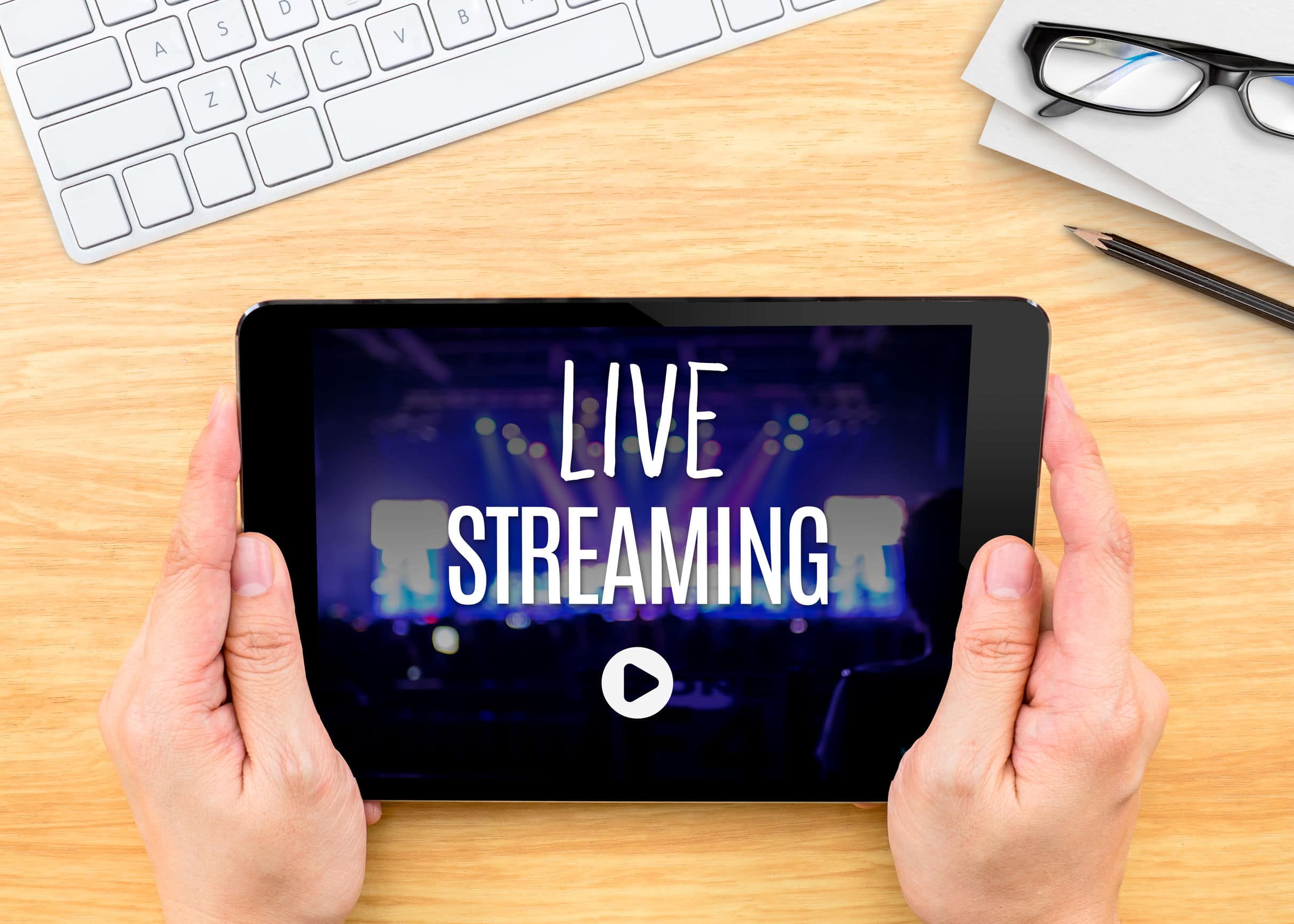With the COVID-19 pandemic, social justice movements, an economic crisis worse than anything since 1930 and giant murder hornets invading the U.S., 2020 has been a hectic year. Along with all these massive changes, we can also say that marketing is taking on some new trends to evolve with these strange times. In this article, we will discuss the new age marketing trends that are springing up as a result of 2020 events and how you can get involved so that your marketing strategy stays strong going into the new year.
Marketing Trend One: Brand Transparency and Social Consciousness

Consumers want to see brands connect with the community.
With the growing Black Lives Matter (BLM) movement and other social justice movements, we can see a groundswell of gratitude around brands that show support toward these engagements. According to WARC, consumers expect not only government officials to support social movements, but also brands they follow. 84 percent of consumers say that brands should support the BLM movement in some way, whether it be by showing support on social media, ensuring diversity in the workplace, supporting local and national initiatives or making donations to supporting charities. 2020 has shown us that your marketing strategy will benefit by simply caring about the communities your customers are involved in.
Along with showing social consciousness, brands benefit by showing transparency, especially on social media. According to consumer statistics from SproutSocial, “53% of consumers say they’re likely to buy from brands that are transparent on social. And 86% of Americans say transparency on social media is more important than ever before, which means they’re willing to take their business to a competitor if they see a lack of transparency.”
Because social media acts as a medium for brands to directly engage with their consumers, people are seeking out brands they can trust more frequently, so being transparent will help your brand gain the trust of more users.
Here are several ways your brand can show transparency:
Engage with users and answer all questions. Sometimes users will ask difficult questions, but making an effort to engage with those users and answer challenging questions will show your users you’re not afraid to tell the truth.
Openly admit to mistakes. Everyone makes mistakes, but hiding them will only show that your brand is fake. Being open about your mistakes and showing consumers how you fix them are essential actions to prove you are a trustworthy brand.
Show what’s behind the scenes. Showing off the finished product of a brand is nice but showing the process of how your brand became successful demonstrates humility and a process the average consumer can relate to. Share your struggles with consumers and give advice on how they can succeed to make them feel like you are relatable; this will build trust.
Give credit. Acknowledging someone’s hard work or success shows consumers that it’s not all about you. Your brand’s success comes from team efforts, so show that off for consumers to understand as well.
The bottom line is people want a brand they can trust and relate to. By being transparent and socially conscious, you deliver a message to consumers that they want to hear, and your brand will benefit from this as well.
Marketing Trend Two: Conversational Marketing
Are chatbots a part of your 2021 marketing strategy?
Sticking with the idea that consumers want brands to be trustworthy, conversational marketing is going to continue to be an important factor in a successful marketing strategy. Conversational marketing means that your brand is actively speaking to consumers on a one-to-one level. This includes responding to questions that consumers have ASAP.
A couple things you can do to facilitate active communication with your consumers are:
- Having customer service representatives available and ready to answer questions. With this, make sure your business’s contact information is easy to find. Post your business’s phone number and email on all your social media profile pages and make sure to respond in a timely manner.
- Set up a chatbot. AI technology is continuing to dominate the future of marketing. According to SingleGrain, “Chatbots will power 85% of customer service by 2020.” Chatbots have many benefits to them. They are available 24/7 and are cheaper than having a live representative to address consumers. They can also cater to any number of consumers at one time, whereas human representatives are limited to one customer at a time.
All this comes down to the marketing trend that people want to know who their brands are, trust them and feel engaged with them. Keep this up, and your brand will see drastic growth.
Marketing Trend Three: Personalization
Personalized marketing connects your brand to your consumers on an individual level.
Think about when you go to Starbucks and the barista writes your name on your cup for you with a happy smiley face. How does this make you feel? It makes you feel acknowledged and that Starbucks truly cares about you as a person. This is what personalization means, addressing consumers on a personal level. This marketing trend has been developing over the last decade and is more prevalent than ever.
Ways you can add personalization to your marketing strategy include:
Create compelling content that is catered to buyer personas. Buyer personas are fictitious individuals that represent a certain target audience. When you know what your consumers want and where they are hanging out, you can create compelling content that speaks directly to their interests. To learn how to create buyer personas, check out this article from HubSpot.
Address your existing customers by name. If you have the data and know your customers’ names, send them marketing content that addresses them by name. An excellent idea is to send out emails that are addressed to your consumers personally. In these emails, you can offer them a promotional gift, such as 20 percent off their next purchase or send them the latest updates about your business. Whatever you chose to send, this will make your customers feel like you know who they are and care enough to remember them.
Use human pronouns. This is a way to tell your customers that they are recognized as people and your brand consists of people as well. For example, instead of having a contact button that says “call 1-800…” make a button that says, “talk to us today!” This sends a message to consumers that they are going to speak to a real human and not some corporate giant. The idea is to show your customers that your brand is made of individuals who want to engage with them.
Marketing Trend Four: Video Content
Video content is the most popular form of digital content.
Video content is going to be the most effective type of media content for your marketing strategy. Text-based content is simply going out of style, and it’s important to keep up with the times. Consumers are constantly watching video content on social media platforms, primarily on mobile devices. With YouTube being the top source for video content and Facebook coming in second, you want to consider posting content on these platforms.
Video content has a huge influence on consumer purchasing decisions. Here are some statistics from ImpactBND that help illustrate that impact:
- 52% of consumers say that watching product videos makes them more confident in online purchase decisions.
- 70% of consumers say that they have shared a brand’s video.
- 72% of businesses say video has improved their conversion rate.
With statistics like these, marketers can confidently say that video content is the way to go to make their marketing strategy a success.
What kind of video content should you be posting though? In recent years, video content itself has been evolving, with new trends showing what form of content is preferred by users. Some of the more popular trends are:
- 1:1 video – Sending a personalized video to consumers instead of a text-based direct message or email leaves a bigger impact. We know that consumers want to feel personalized and valued by the brands they follow, so by sending a personalized video response to your consumers, you show them they are important to your brand.
- Live streaming – Live steaming is a video tool that allows you to engage with users in real-time and get instant engagement. This allows for a deeper connection with consumers. Live streaming is also one of the most effective forms of video content, as “80% of audiences would rather watch a livestream than read a blog post,” according to Vimeo statistics. Some of the top platforms that use live streaming are Facebook, Instagram, Twitch and YouTube.
- Vlogs – Vlogs or video blogs are becoming the new trend for blogging. As video content is more popular than text-based content, users much prefer to watch a vlog than read a blog.
Marketing Trend Five: User-Generated Content
First, what is user-generated content? User-generated content, or UGC, is content that is posted digitally, mostly on social media by users, to spread awareness of brands they have a particular interest in. This can be in any form of content such as video, images or text. Several years ago, UGC was overlooked by marketers and was not thought to be a successful marketing tactic. In 2020, however, UGC took off as a main influential marketing strategy. This can be attributed to the rise of influencer marketing and the consumer desire for more transparent brand images. UGC has become even more popular since the start of the COVID-19 pandemic, mainly because of the restrictions COVID-19 has presented, causing people to stay home and forcing brands to adapt to the changing times. One adaptation is turning to customers to create content others want to view.
These statistics from Tint help illustrate why UGC is something all marketers should include in their marketing strategy.
- Compared to average ads, UGC-based ads receive four times higher click-through rates and a 50 percent drop in cost-per-clicks.
- UGC gets 28 percent higher engagement on social media compared to standard company posts.
- More than 50 percent of consumers stated that they want brands to tell them what types of content to create and share.
To learn more about UGC, check out this article from Hootsuite.
Marketing Trend Six: Search Engine Optimization
SEO is an important factor for a successful marketing strategy.
Although search engine optimization (SEO) isn’t directly a marketing trend, it has significant importance in digital marketing. As Google’s algorithms are constantly changing, it’s important to keep up with those changes so you know how to maximize your SEO. One of the most prevalent SEO trends going into 2021 is user experience, or UX. This is how your digital interfaces are designed for users, and now more than ever, UX plays an important role in digital marketing, as Google is now able to track core web vitals and considers them in its rankings.
To strengthen SEO, you need to design your websites so that users can navigate quickly and easily; otherwise, you will lose users and lower your search engine ranking. Pay close attention to your loading times. If your website loads too slowly, users will get frustrated and stop using your site. Also, think about how your website is designed; users need to be able to find information with ease, especially on mobile devices. In fact, according to Think With Google, “More than 1/3 of smartphone users will immediately go to another company’s site or mobile app if they don’t get what they need.” With this being said, make sure you have an active website that is responsive and well designed, so that your business ranks high on search engines and your efforts to create a successful marketing strategy don’t falter because of poor web design.
With everyone hoping that 2021 is a better year than 2020, the new year will surely bring interesting times. By following up with the latest trends and adjusting your marketing strategy so that it’s in line with the current times, your business will be off to a promising start.



